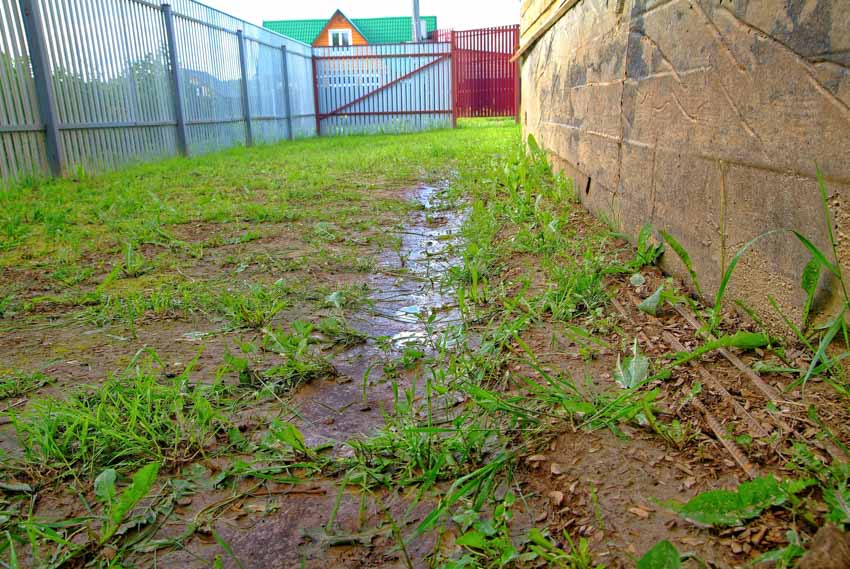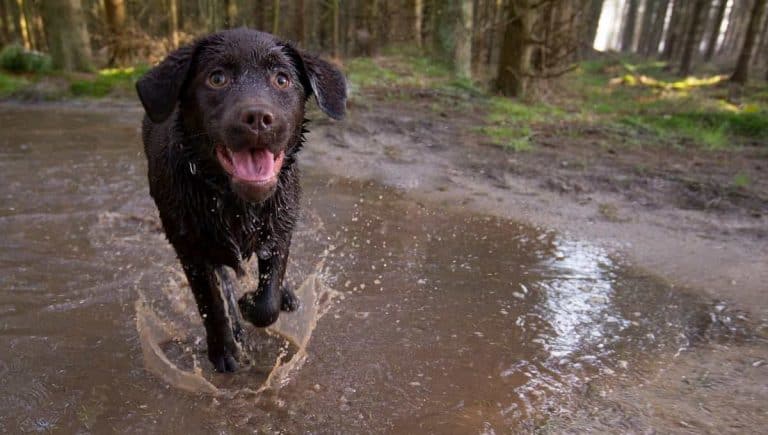Your backyard should be a haven for both you and your four-legged friend to enjoy. But when a once-charming dog trail turns into a muddy mess, it can leave you scratching your head and your pup covered in dirt. How to fix a muddy backyard dog rrail?
The good news is that a muddy backyard dog trail is a fixable problem. In this comprehensive guide, we’ll delve into the reasons behind muddy trails, explore effective solutions, and provide step-by-step instructions to restore your outdoor space to its former glory. Get ready to bid farewell to the mud and hello to a pristine, paw-friendly backyard! 🐾🌱
TL;DR: A muddy backyard dog trail can be a nuisance, but it’s fixable. This guide offers insights into the causes of muddy trails and provides effective solutions to restore your outdoor space.
A backyard trail that was once a delightful path for your dog to explore can quickly turn into a muddy nightmare, making outdoor playtime less enjoyable for both of you. Whether it’s the result of rain, high foot traffic, or your dog’s enthusiastic digging, a muddy trail can be frustrating to deal with. However, there’s no need to despair. With the right strategies, you can fix the problem and create a functional and beautiful trail that both you and your canine companion can enjoy.
Understanding the Causes of a Muddy Dog Trail
- Rain and Drainage Issues:
- Compromised Drainage: Poor drainage can lead to water accumulation, turning the trail into a mud pit.
- Erosion: Rainwater can erode the soil, making the trail uneven and muddy.
- Heavy Foot Traffic:
- Wear and Tear: Frequent use of the trail, especially in wet conditions, can result in mud accumulation.
- Lack of Vegetation: Insufficient plant cover can contribute to soil erosion and mud formation.
- Dog’s Digging Habits:
- Destructive Digging: Dogs that enjoy digging can churn up the soil, creating mud patches.
- Natural Behavior: Digging is a normal behavior for dogs, but it can lead to muddy trails if not managed.
Solutions to Fix a Muddy Backyard Dog Trail

- Assess Drainage and Soil Composition:
- Grade the Trail: Ensure proper slope for water runoff and prevent water pooling.
- Add Gravel: Incorporate gravel or coarse sand to improve drainage and stability.
- Install Pathway Materials:
- Wood Chips: Lay down wood chips for a natural and absorbent trail surface.
- Pavers or Stepping Stones: Create a durable and mud-free pathway using pavers or stepping stones.
- Introduce Vegetation:
- Plant Ground Covers: Choose hardy ground cover plants to stabilize the soil and reduce erosion.
- Create a Border: Plant vegetation along the edges of the trail to prevent soil from spreading.
Dog-Friendly Trail Maintenance
- Provide Distraction and Entertainment:
- Designate Play Areas: Allocate specific areas where your dog can dig and play without damaging the trail.
- Interactive Toys: Offer toys and activities that engage your dog’s natural digging instincts.
- Regular Grooming:
- Rake and Remove Debris: Regularly rake the trail to prevent mud buildup and remove leaves, sticks, and other debris.
- Treat the Trail as a Learning Opportunity:
- Training: Teach your dog commands like “stay” or “off” to minimize trail disruption.
- Positive Reinforcement: Reward your dog for avoiding destructive behaviors on the trail.
Conclusion on How to Fix a Muddy Backyard Dog Trail?
Tips From Experienced: A muddy backyard dog trail is a common challenge, but with the right approach, you can transform it into a functional and inviting space. Address the root causes, implement effective solutions, and engage in proactive trail maintenance to ensure both you and your dog can enjoy the outdoors without the mess.
FAQs
Q1: Can I use regular sand to fix a muddy dog trail?
A: Regular sand may compact and become muddy when wet. It’s better to use coarse sand or gravel for improved drainage and stability.
Q2: How can I prevent my dog from digging up the trail again?
A: Designate a digging area for your dog, provide ample mental and physical stimulation, and use positive reinforcement to discourage digging on the trail.
Q3: Can I use mulch to cover the trail?
A: While mulch can help absorb moisture, it may become messy when wet and can be ingested by dogs. Consider wood chips or other suitable materials instead.
Q4: How often should I groom the dog trail to prevent mud buildup?
A: Groom the trail regularly, especially after rainy days or heavy use. Raking and removing debris can help prevent mud accumulation.
Summary on How to Fix a Muddy Backyard Dog Trail?
A muddy backyard dog trail doesn’t have to be a permanent issue. By understanding the causes, implementing effective solutions, and practicing proactive maintenance, you can create a clean and enjoyable outdoor space for you and your furry friend.
Fun Fact: Dogs have an impressive sense of smell that helps them explore and navigate their environment. Creating a dog-friendly trail allows them to engage their senses while keeping your backyard looking great.
If you love pets and want to learn more about them, head over to PetSWAT today!
Originally posted 2023-08-12 22:47:30.


